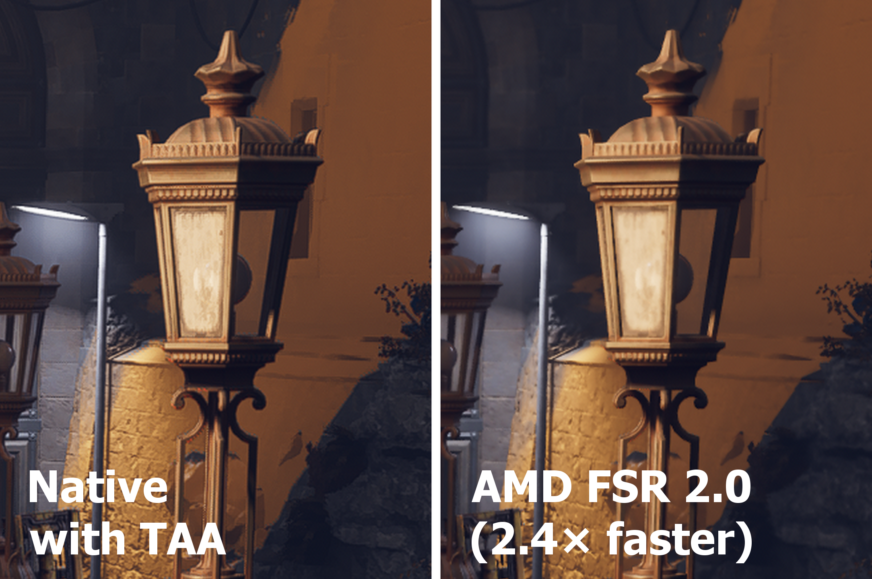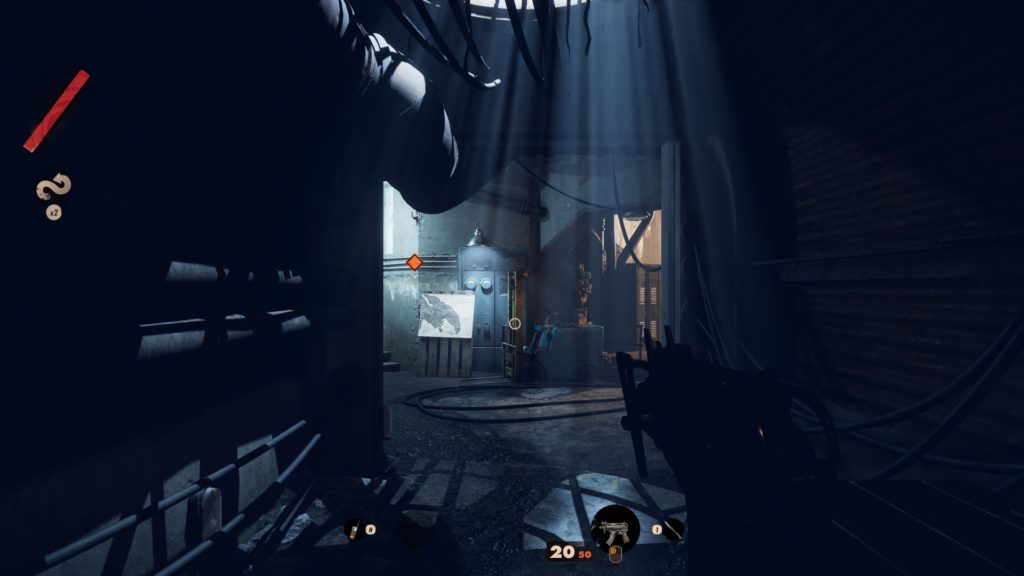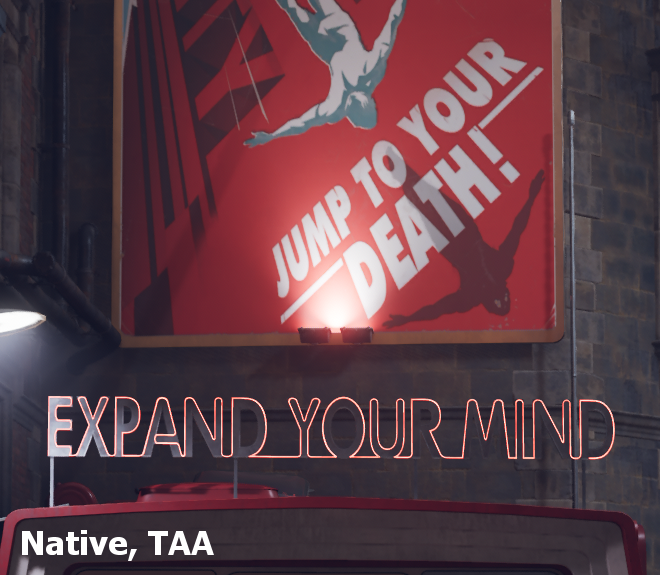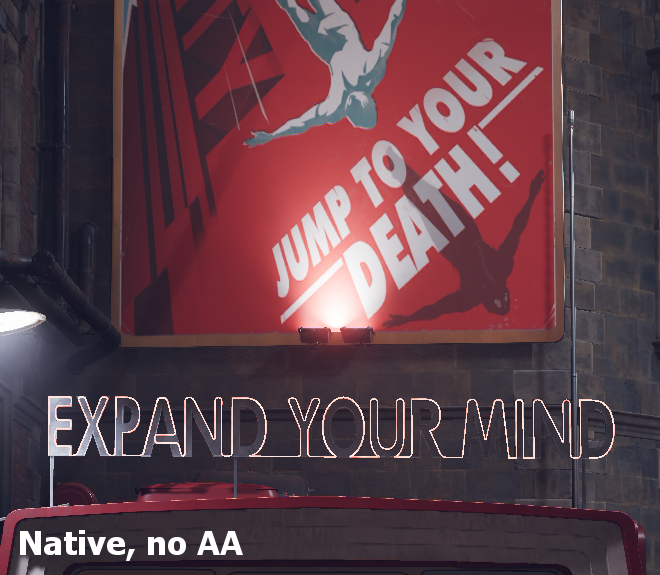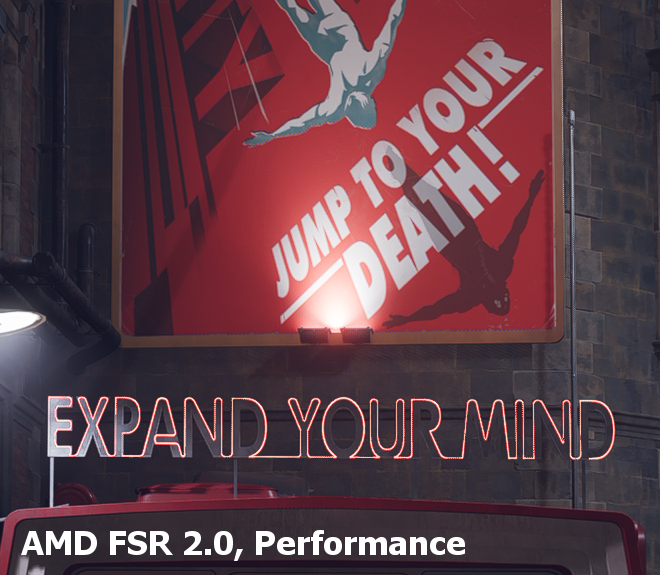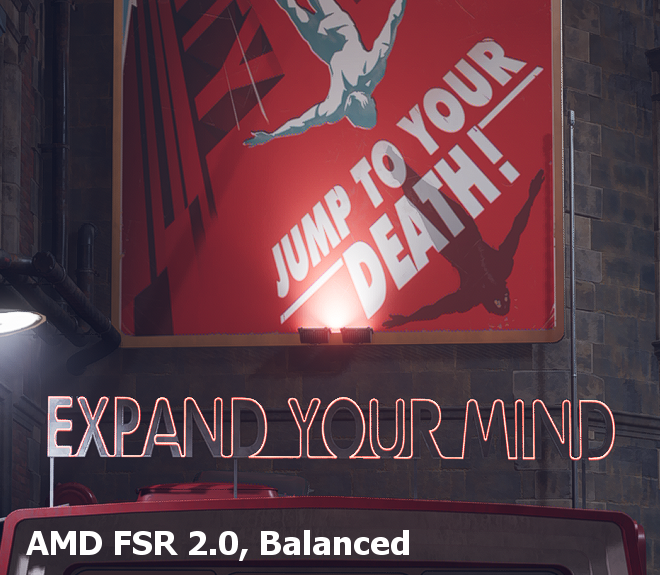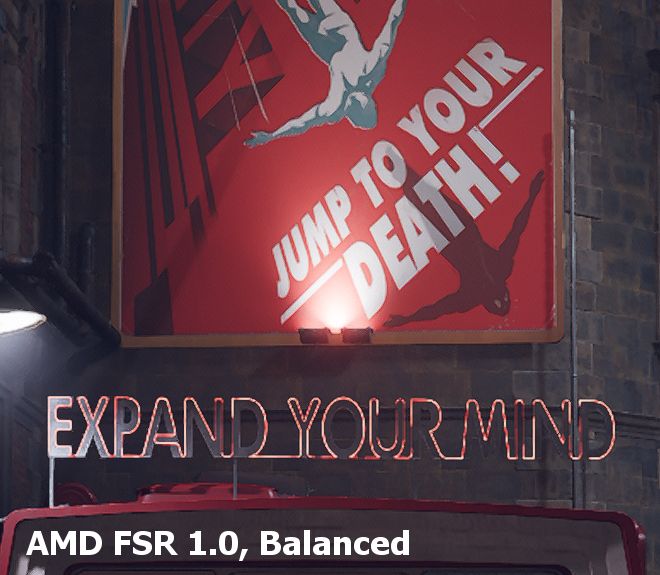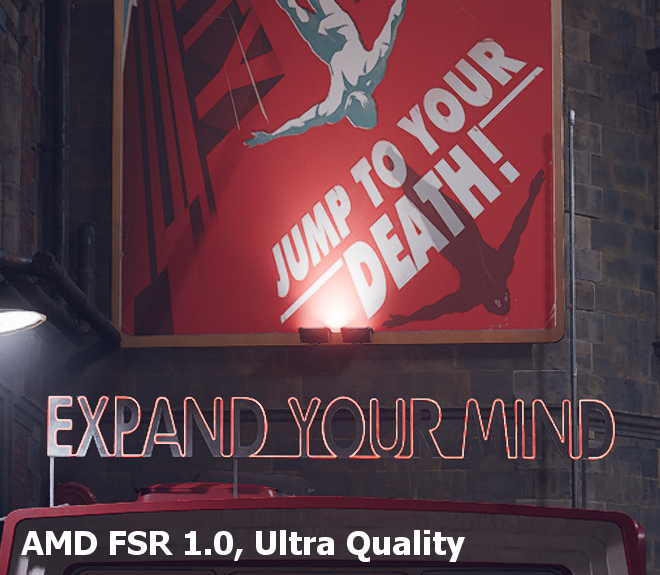What is FSR and image quality comparison
The second version of FidelityFX Super Resolution is officially released. This upscaler premiered in Deathloop, the first and so far the only supported game. We compared FSR 2.0 with FSR 1.0 in our tests, both visually and performance-wise. While FSR 1.0 couldn’t compete visually with Nvidia’s DLSS, and the result was significantly worse, AMD pulled the thorn out of its heel with FSR 2.0. A full-featured alternative is now available.
FSR 2.0 (FidelityFX Super Resolution 2.0) is, like first generation FSR, upscaling for games, where GPU rendering is done at a lower resolution and frames are then upscaled to a higher output resolution. This allows the game to run at significantly higher fps to match the reduced internal resolution, although this comes at the cost of poorer image quality.
Temporal functioning – similar to DLSS 2.x
The new FSR 2.0 differs from FSR 1.0 in that version 1.0 had purely “spatial” scaling – it only worked with pixels of one frame at a time (we discuss how this works in this article). In contrast, version 2.0 adds a temporal dimension, and the entire algorithm also works with data from previous frames, as well as motion vectors that allow it to see where pixels that are at a certain position in the current frame were in previous frames. This allows them to be combined together with the current ones, which can be used to improve detail. This is often called temporal reconstruction.
Temporal filtering is a major and fundamental new feature of Nvidia DLSS 2.0 and all subsequent versions since DLSS 1.0 (this was also spatial as FSR 1.0). FSR 2.0 is essentially AMD’s answer to DLSS 2.x and is expected to deliver more or less similar advances in image quality.
AMD FSR 2.0, like FSR 1.0/DLSS, has several profiles that determine the intensity of upscaling. The highest performance is achieved with the “performance” preset, since rendering is done at the lowest resolution. In both axes it is 50 % lower than native. The opposite of this is Quality (85 % of the native resolution axis) and the compromise is “Balanced” (75 %). Compared to FSR 1.0, “Ultra Quality” is missing, but it was no longer too different from the native resolution, so the differences in performance and image were quite small.
FSR 2.0 in Deathloop
Let’s get into actual practice. We tested FSR 2.0 in an open beta of Deathloop. At the same time, FSR 1.0 support was retained, and upscaling can be turned off, or you don’t need to turn it on at all. So in addition to comparing all the FSR 2.0 and FSR 1.0 presets, we were also able to test in native resolution. This with TAA and, for the sake of interest, without antialiasing, which might be of interest to owners of laptops, which often have quite high resolutions in relation to the display size and antialiasing in combination with a fine raster almost ceases to make sense.
In addition to upscaling, FSR 2.0 also smooths edges, essentially temporally. Beyond this basic operation, FSR 2.0 also incorporates more complex features that suppress ghosting (after improper temporal filtering creates “ghosts” from the previous frame) or preserve fine detail. And we can already show this in Deathloop.
In a series of close-ups (sceenshot cutouts), notice how “scattered” the fine lines, the special wires against the sky, are with the FSR 2.1 on the roof of the building. Whereas the result with FSR 2.0 can be evaluated by some as a more impressive option with sharper contours compared to the native “original”. And even on a “performance” level with more than twice the frame rate compared to the native resolution. There, however, Deathloop’s smoothness on maximum detail with RayTracing (including rendering sun shadows) is uncomfortable on weaker graphics cards. Even unplayable in UHD with average 16 fps. With FSR 2.0 (P) even minimum fps are above 30.
Test results and comparisons of all modes (even in combination with two different Ambient Occlusion settings, where the one more demanding uses raytracing graphics) can be found in the comparison charts of the second chapter of the article.
The benefit of the “Thin Feature Locking” function can also be found, for example, in signs that have an illuminated outer contour. FSR 1.0 is visually comparable to FSR 2.0 “performance” only at the highest quality level (FSR 1.0 Ultra Quality). However, at that point the fps of FSR 1.0 is already significantly lower than those of FSR 2.0. AMD’s new upscaler is simply more effective here (and not only here). Although those visual improvements aren’t completely “free”, and you have to sacrifice 10–15 % of performance across FSR versions within the same, let’s say 50 % (“performance”). Either way, the drop in gaming fps is negligible given the vastly improved visuals.
Deathloop’s settings allow the choice of rendering sun shadows. These, unless you manually change the choice, will be a matter of rasterization. However, in all our tests we use RayTracing on them. You won’t overlook the difference in sharpness here either. We’ll make sure to prepare a comparison with DLSS 2.3 for you in the future, when the improvement in FSR is this significant.
The big difference from DLSS 2.x is that FSR 2.0 does not use a neural network (AI) for scaling throughout the complex algorithm. The use of a neural network in Nvidia DLSS 2.x means that the technology can only be run on GPUs that contain proprietary AI accelerators, called tensor cores. These are only present in the GeForce RTX 2000 and RTX 3000 graphics cards.
In contrast, FSR 2.0 uses generic computing units, programmable shaders. So there is no connection to (some) graphics from a single manufacturer, and FSR 2.0 should run almost everywhere. From AMD, Polaris, Vega and RDNA/RDNA 2 GPUs are officially supported. For Nvidia, it’s the Pascal, Turing and Ampere generations. Eventually consoles should be supported as well.





